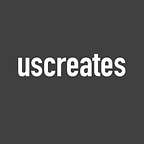Data and design blog #2: focus on user needs, social outcomes AND the data
This is the second blog in a series of three about how design can help data projects to deliver social good. The first focused on how design can communicate what data and computer techniques are, which is important for increasing people’s understanding and acceptance of how they work, and also helping partners deliver them. The third will consider how design can ‘wrap itself around’ the data analysis to ensure that the experience of generating data and using insight deliver good outcomes. This blog looks at the approach we have created to consider data, individual user need and collective social outcomes throughout projects simultaneously.
As a reminder, we have developed this approach through practical work with: ODI, Kent and Doncaster councils to use open data to improve health outcomes and careers pathways; nuron — a wastewater tech monitoring SME — to create an interface through which water companies can use real-time sensor monitoring data; and the EU Policy Lab’s Blockchain4EU project to imagine how blockchain can be used beyond financial services.
Service design always starts with a discovery of people’s lived experience of the social outcome the project is trying to achieve, as well as identifying user needs in achieving those outcomes. But data projects — more often than not — start with data. At worst, the process could involve simply playing with a dataset to see what can be found, without any purpose other than to work with the data. At best, the process would be motivated by a clear public benefit, and would involve a safe, controlled sandpit to experiment with the data to ensure that the level of intrusion is always justified by the user need. Data Ethics frameworks — such as the Government’s Data Science Ethical Framework, or ODI’s Ethics Canvas — ask that there is a focus on user need.
Of course, this is not just an individual need. Recently there has been increasing arguments that we need to consider collective need (e.g. Cassie Robinson’s excellent blog), rather than a relentless focus on individual user need. And this is true too of data projects, where in many cases the collective good of data trumps individual rights over it. Giving people the right to opt out of their data would create ‘data holes’ which might prevent justice services from identifying wrong-doers or may inhibit health researchers understanding which groups in society were most at health risk. So a focus on collective good as well as individual user need is key.
The majority of service design projects that we work on are solution-agnostic: establishing user need first or a collective outcome first and then creating whatever solutions are necessary to meet that. Other service design projects, which are solution-determined, can start with a technology (or data) solution in mind and try to establish the user need and how the technology can support it. There are pros and cons to both. Solution-agnostic projects create a real focus on user need, but the solution is either not always immediately feasible or even known (which is why we often use lateral inspiration). Solution-determined projects will be able to move into delivery more quickly, but risk shoehorning a solution to fit a user need.
Our nuron and Blockchain projects both started with a technology (fibre-optic real time waste water monitoring, or the blockchain for delivery chains) and our work focused on establishing user need through interviews with various roles within water companies, or through more hypothetical personas at a two-day workshop with policy, legal and technology experts in Brussels. In our exploratory work with Kent and Doncaster, we pursued what we called a ‘triple-trick’ approach to the design process: drawing in or creating new tools to consider data, individual users (citizens) and system needs (partner organisations delivering social outcomes) at each stage. The detailed tools are set out in the diagram below.
If you have been taking a data and service design approach, please get in touch with us (or the ODI’s data for service redesign project) as we’d love to hear more examples. Or if you want to use data to fuel your service design — and you know what that data is (or don’t) — then get in touch and we’ll see how we can help.
